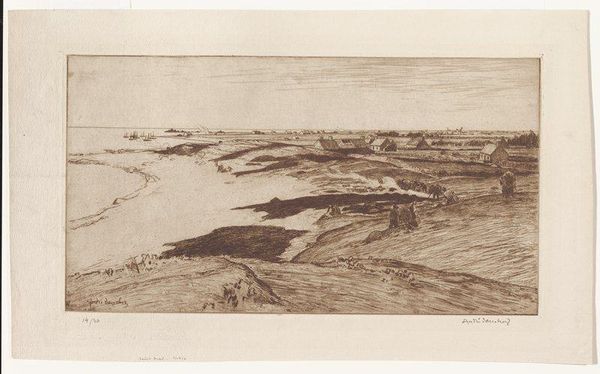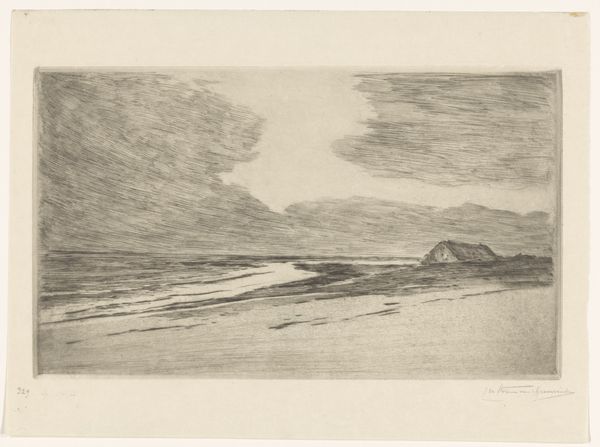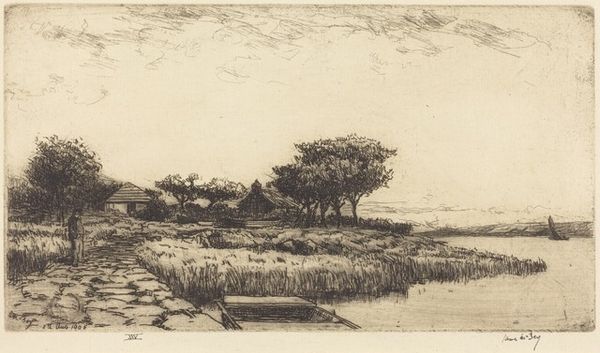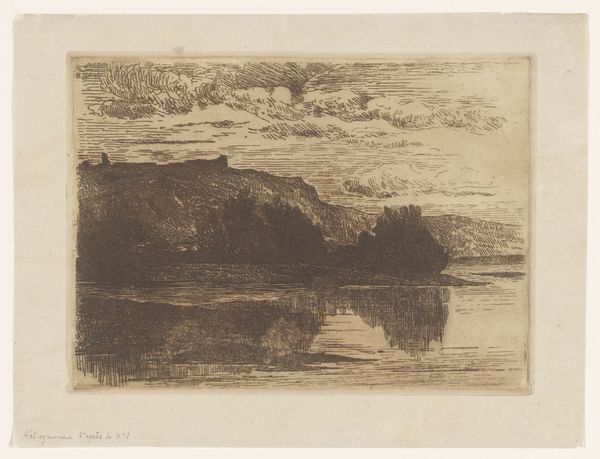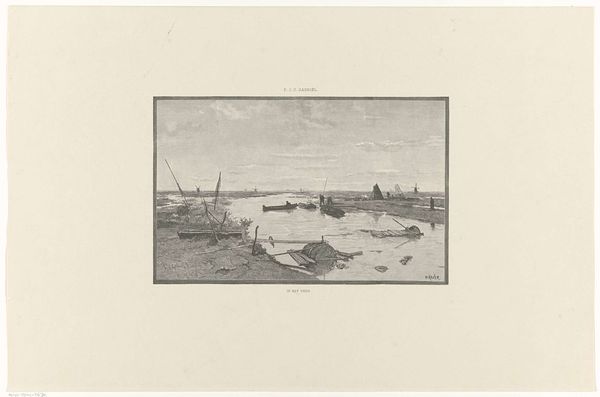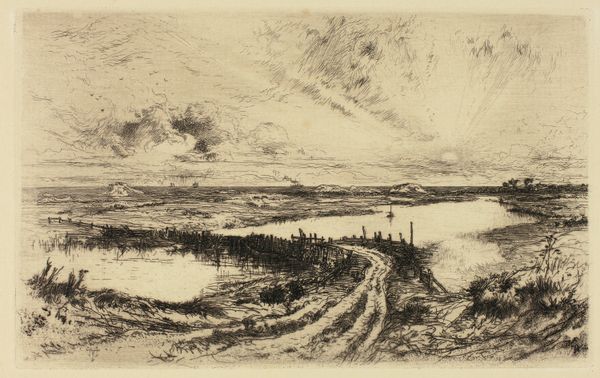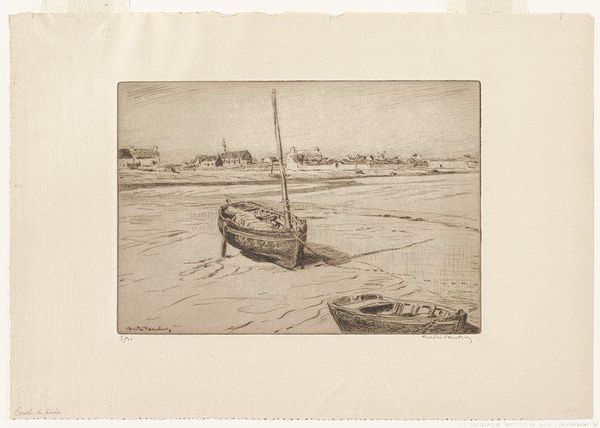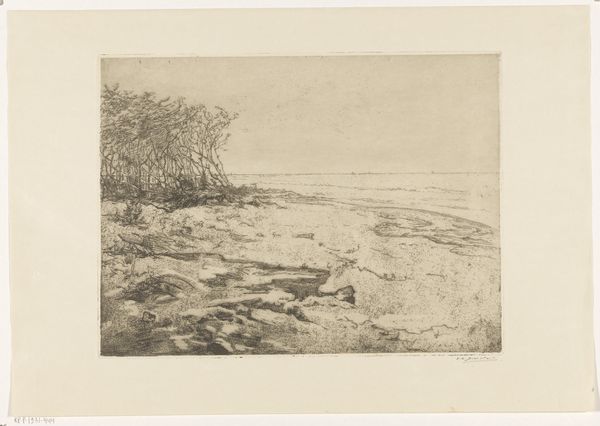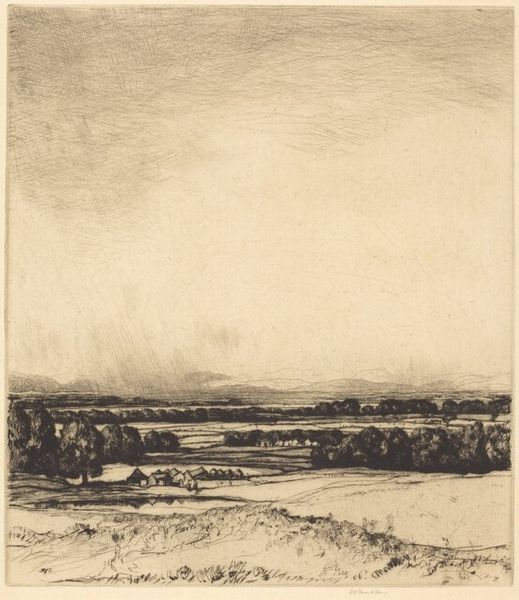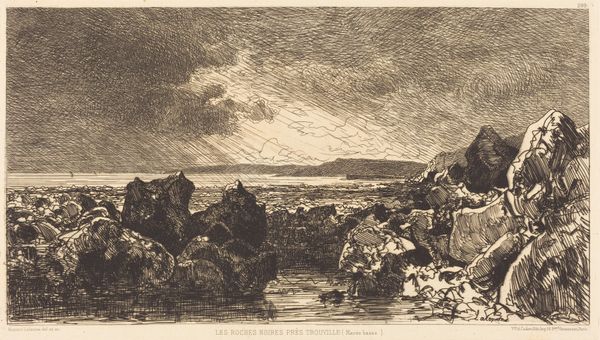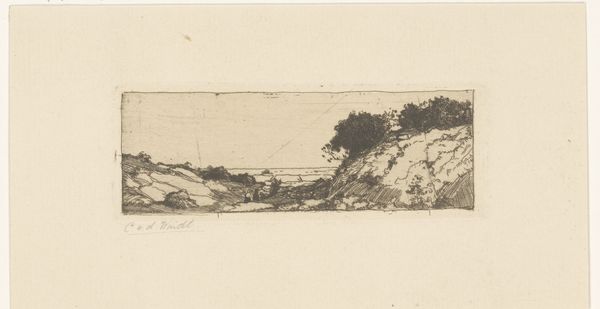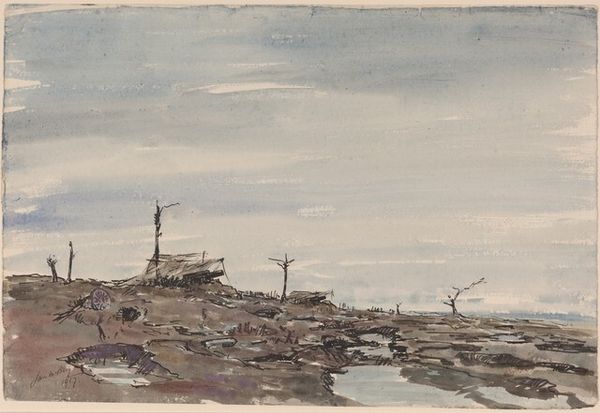
drawing, print, etching
#
drawing
# print
#
etching
#
landscape
#
modernism
#
realism
#
monochrome
Dimensions: overall (approximate): 37.9 x 58 cm (14 15/16 x 22 13/16 in.)
Copyright: National Gallery of Art: CC0 1.0
Curator: This etching, made by Andrew Wyeth in 1939, is titled "Lobsterman's Ledge." There’s an immediate sense of isolation to this landscape, isn't there? Editor: Absolutely. The monochromatic palette amplifies the ruggedness. It speaks of weathered resilience, those boats looking a little forlorn. The piled stones feel ancient, markers of human presence in a harsh place. Curator: The scene is certainly rooted in Wyeth's deep connection to the Maine coastline. It evokes a period of immense upheaval. Images such as these provided respite from an increasingly troubled global stage, a connection to timeless and grounding spaces that was accessible to many American people. Editor: Right, it captures that feeling of being both at the edge and somehow centered. Those boats evoke journeys, risk, the everyday struggle of the lobstermen and fishing communities. The etched lines themselves create a tactile sense of the landscape, a sense of permanence in how those fishermen continue working with their hands. Curator: Well, Wyeth prints circulated widely during the mid-century, reaching audiences that might not have encountered his paintings in galleries. It underscores his popularity at the time, but also indicates something of an attempt to market and manage Wyeth's oeuvre into wider spheres, broadening accessibility. Editor: Do you think that plays into the seeming sparseness? This pared down, rugged landscape has very primal qualities and is imbued with the spirit of self-reliance. It’s as though the artist highlights qualities that people felt they had at that time, perhaps even wished to further embody in response to external conditions. Curator: It is an image born from the sociopolitical and financial turbulence rippling through the pre-war landscape, though the commercial role and function of artworks is always at play to varying degrees, and worth attending to here. What is remarkable about Wyeth is how he uses realism as a tool for this subtle, and at times, melancholic response. Editor: Yes. There’s also something universal here, those enduring markers, of man versus nature, of hard work etched into the landscape. Looking closer reveals that it has as much to do with psychological symbolism as with depicting external, and political events. Curator: A valuable thing to be reminded of. A landscape loaded with its own cultural anxieties and market appeal, both existing alongside what is on the surface. Editor: Indeed. Leaving me to see an austere beauty—perhaps one of hope mixed with resignation—in such visual restraint.
Comments
No comments
Be the first to comment and join the conversation on the ultimate creative platform.
